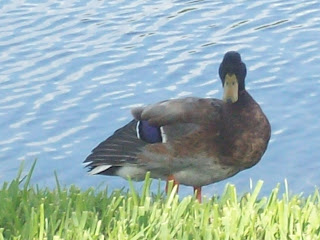The real sticking point for me was that, as a lover of the outdoors and of Mother Nature herself, I've always been intrigued by the prospect of an outdoor life by doing a combination of self sufficient living and woodsman skills. But I always felt I fell short, either in regard to basic survival skills to the remoteness that Geagan experienced back in those days and even whether I could even undertake such a seemingly monumental task. I remember picking this book up as a freshman at Unity College and reading it cover to cover. The journey Geagan was taking seemed so distant from what my path seemed to be at the time: a college aged boy learning the skills and concepts he would need to get a job in the wildlife management field and then go on to live his life according to that plan. However recently, as I spend my days sitting and reading and thinking (my current job has a lot of down time), I've come to relate to some of the themes brought about by the author. I can relate to the sense of hopelessness one feels when they cannot find something they like or want to do as well as the societal expectations one feels pressured upon them when they can't get a job quickly enough or even one associated with their degree of study. I feel fortunate though that during the period Geagan lived in, I don't have to live under the same conditions. Having been published in the 50s, the idea of settling down with a good job and a family on the way seemed like the perfect model for life at the time. Thank goodness he took a different path. (Mind you he got "there" eventually, but by no means in a conventional manner.)
I love stories like this with their rich descriptions of nature and its wonders, but also the hard reality of the situation he put himself in so he could find his true passion in life. As I was reading over it today, I read a paragraph that reassured a position I'd held for a while, but never had the courage to hold aloft as my own. No worries though. It's not a major character issue or problem, but instead the idea of beauty vs. function when it comes to fishing flies. I'm the type of person that will use something over and over again because it works as opposed to what it looks like. This is why I prefer using hand-tied nymph flies over dries. This is primarily because dries are supposed to imitate a specific surface insect form while a nymph can be bushy, pulled loose, and wooly without the fish paying too much mind to it. It's also because I tie really crappy dry flies. What's most important however, is the motion given to the fly or lure that will attract the fishes attention, rather than size, shape, or bold and bright colors. Geagan writes of an angler he met in his first summer while chopping wood at his cabin and describes the flies the man was using as "…very large, very gaudy, and very heavily dressed wet flies tied on huge hooks that somebody had unloaded on him." While it is true that some of the most complex salmon flies ever tied are beautiful pieces of art (as seen below), as Geagan describes, they are woefully overdressed for most situations.
 |
| The Green Highlander. More appropriately designed to capture the attention of humans than of trout. |
"With the white hair from the tail of the deer, also squirrel hair, feathers from the hens, and what materials I had in my kit, I was able to turn out a large number of streamers, also wet flies and tiny dry flies. My flies were far from first class. They would never have sold in the stores. But they weren't tied for fisherman, they were tied for fish and they caught them and stood up well under the punishment. Most flies I have seen in the shops were tied to attract the fisherman. And they buy them at prices I have always thought were much too high. The flies are gaudy and usually too heavily dressed to fool fish, particularly those wise old guys on waters that are fished hard."I'm always amazed by the simplicity presented in this book, how function generally trumps form and how a little ingenuity and thinking can yield much better results than just sticking to convention. That's ultimately what brings me back to the book over and over again. Having some different idea or concept from everyone else and trying to work it out another way rather than hopelessly grinding away at tried and worn out trails to the same future trodden on by the feet of so many others. It's exactly what Thoreau described when he explained that "most men lead lives of quiet desperation…" We all want avoid that trap, so I give you the advice of another one of America's greats, Mark Twain.
"Twenty years from now you will be more disappointed by the things that you didn't do than by the ones you did do. So throw off the bowlines. Sail away from the safe harbor. Catch the trade winds in your sails. Explore. Dream. Discover."Thank you for reading and have a lovely weekend.








